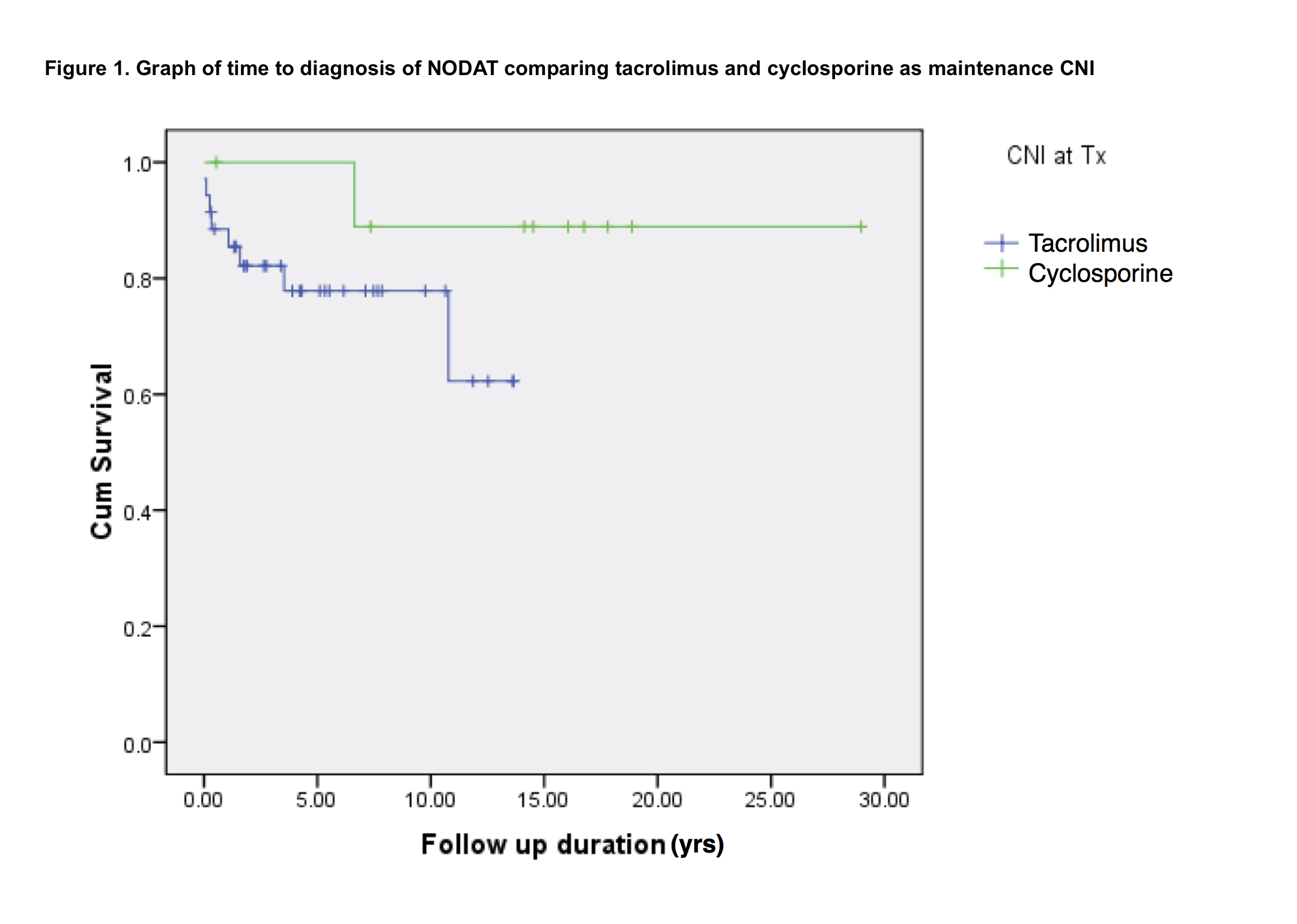Prevalence of Diabetes after Transplant in a Single Center
1Paediatrics, National University Health System, Singapore, Singapore, 2Pharmacy, National University of Singapore, Singapore, Singapore, 3NUCOT, National University Health System, Singapore, Singapore
Meeting: 2019 American Transplant Congress
Abstract number: C242
Keywords: Hyperglycemia, Kidney transplantation, Pediatric
Session Information
Session Name: Poster Session C: Kidney: Pediatrics
Session Type: Poster Session
Date: Monday, June 3, 2019
Session Time: 6:00pm-7:00pm
 Presentation Time: 6:00pm-7:00pm
Presentation Time: 6:00pm-7:00pm
Location: Hall C & D
*Purpose: The investigators aim to study the prevalence of post kidney transplant diabetes (NODAT) in a single Asian pediatric centre and to identify clinical factors and genetic polymorphisms which may predict NODAT.
*Methods: 45 active kidney transplant patients were recruited. 9 patients had NODAT. Patients who did not develop NODAT were controls. Diagnosis was based on American Diabetes Association guidelines. We collected clinical parameters retrospectively. Blood samples for genetic polymorphisms were collected after consent obtained. Parametric tests compared continuous parameters between groups. We used Cox regression analysis for multivariate analysis of risk factors.
*Results: NODAT patients had higher BMI (19.44 vs. 17.03, p=0.05). 8 NODAT patients (89%) received tacrolimus as initial maintenance calcineurin inhibitor (CNI), vs 27 controls (75%, p=0.66). One patient’s initial maintenance CNI was cyclosporine, but had NODAT after switching to tacrolimus. Kaplan-Meier survival curves showed earlier onset of NODAT in patients whose first CNI was tacrolimus vs cyclosporine (10.4 yrs vs. 26.4 yrs, CI 8.5-12.3 yrs vs. 21.9-31.1, Figure 1). On multivariate analysis, male patients were found to be 95% less likely to develop NODAT compared to females (p 0.02, 95% CI 0.0-0.6, Table 1). Ethnicity, BMI, CMV status and dyslipidemia did not confer risk to NODAT. On univariate analysis, T allele of rs4402960 single nucleotide polymorphism on the IGF2BP2 gene was associated with high risk of NODAT (HR 29, CI 2.83-296.92, p=0.02). This allele is reported in 38% of the local population and reported to confer risk of type 2 diabetes in East Asian, European and South Asian populations.
*Conclusions: 9 of 45 patients (20%) enrolled in the study was diagnosed with NODAT. The study identified a possible risk factor in female gender, and polymorphisms in the IGF2BP2 gene. The study did not identify tacrolimus use as a risk factor for NODAT, however did show that patients who were on tacrolimus developed NODAT earlier compared to cyclosporine.
| Pretransplant factors | HR | p | lower CI (95%) | upper CI (95%) |
| Male | 0.05 | 0.02 | 0.0 | 0.6 |
| BMI | 1.1 | 0.17 | 0.9 | 1.3 |
| Dyslipidaemia | 0.49 | 0.41 | 0.1 | 2.7 |
| CMV D+R- | 3.4 | 0.18 | 0.6 | 20.8 |
| Chinese | 0.8 | 0.86 | 0.1 | 8.1 |
| Malay | 0.1 | 0.14 | 0.0 | 2.1 |
To cite this abstract in AMA style:
Koh LJ, Yau WP, Than M, Ng KH, Vathsala A, Yap HK. Prevalence of Diabetes after Transplant in a Single Center [abstract]. Am J Transplant. 2019; 19 (suppl 3). https://atcmeetingabstracts.com/abstract/prevalence-of-diabetes-after-transplant-in-a-single-center/. Accessed December 14, 2025.« Back to 2019 American Transplant Congress

